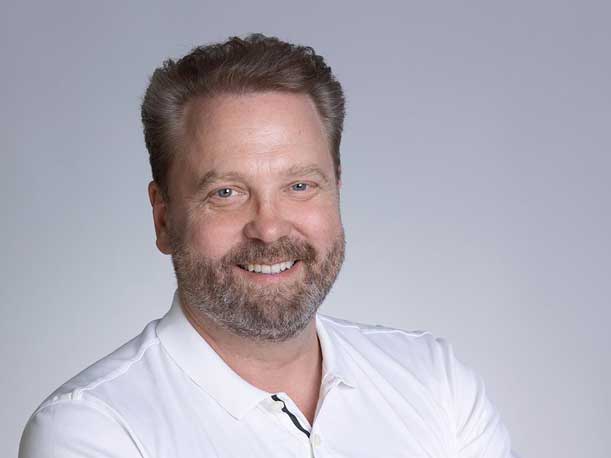Cisco Brings Former Microsoft, Broadcom Exec To Take Over Hardware Development
Cisco CEO Chuck Robbins unveiled the hiring of Martin Lund, the former corporate vice president Microsoft Azure for Operators and former Broadcom networking executive, to take over Cisco’s Common Hardware Group from Eyal Dagan who as of Monday is the company’s new head of strategic projects.

Cisco is making a major change in its executive leadership team, moving the head of its hardware development business to focus on strategic projects and replacing him with a former Microsoft networking and semiconductor executive.
Cisco CEO Chuck Robbins Monday said in a blog post that Eyal Dagan, who has led the company’s Common Hardware Group since 2020, most recently as executive vice president of that group, has been appointed as Cisco’s new Executive Vice President of strategic projects. In his new role Dagan will work with Robbins on critical projects requiring deep technical expertise.
Robbins also wrote that Martin Lund (pictured), Microsoft’s former corporate vice president of Azure for Operators, as of Monday is Cisco’s new executive vice president of the Common Hardware Group and the newest member of Cisco’s executive leadership team.
[Related: CEO Chuck Robbins On Cisco Splunk’s AI Advantage And Why HPE-Juniper Misses The Security Mark]
Azure for Operators is responsible for delivering Azure-based solutions for public and private 5G, packet core, voice, and AI operations.
Cisco’s Common Hardware Group delivers the silicon, hardware systems, and optics for Cisco’s switching, routing, optical, cable access, and IoT portfolios. The organization, as of the second half of 2023, had about 2,100 employees across 16 countries developing products that account for about three-fourths of Cisco’s product revenue, the company wrote in a recent recruitment advertisement.
The Common Hardware Group is a key part of Cisco’s ability to compete with some of its key rivals, especially arch-rival Hewlett Packard Enterprise, which in 2015 acquired Aruba Networks and is currently in the process of acquiring Juniper Networks in s $14-billion deal.
Robbins, in his blog post, wrote that Dagan is expected to work with him and the rest of the ELT on critical projects that require deep technical expertise to ensure Cisco’s innovation and leadership in the technology industry remains strong, but that he waited for the right person to take over the Common Hardware Group.
“With that in mind, I am very pleased to announce that Martin Lund, an industry veteran with decades of experience driving innovation and business growth in the networking and semiconductor industries, is joining Cisco as our new Executive Vice President, Common Hardware Group. Martin will join our ELT and report to me, effective today,” he wrote.
Lund left Microsoft in July of 2023 as that company’s corporate vice president of Microsoft’s Azure for Operators. After leaving Microsoft he took eight months away from the IT industry on what he called a “career break,” according to his LinkedIn profile.
Prior to Microsoft, Lund was CEO of Metaswitch Networks, a cloud-native communications software company, which in 2020 was acquired by Microsoft. Prior to that he spent three-and-a-half years at Cadence Design Systems and 12 years at Broadcom where he was senior vice president and general manager of networking switching.
“Martin’s experience defining strategy, leading global teams, and driving growth, combined with his extensive background in networking and AI, make him the right leader to drive this critical part of our business forward,” Robbins wrote.
The executive changes come just three weeks after Cisco made several other changes to its ELT. Those changes stemmed from the February departure of Maria Martinez, Cisco’s executive vice president and chief operating officer.
The March ELT reshuffling included moving Liz Centoni, formerly chief strategy officer and executive vice president and general manager of applications, to serve as executive vice president and chief customer experience officer; Thimaya Subaiya, formerly Cisco’s chief transformation officer, to serve as executive vice president of operations; and Robbins’ former Chief of Staff Mark Patterson to serve as the company’s new executive vice president and chief strategy officer.
HPE CEO Antonio Neri recently told CRN that his company has been leapfrogging Cisco in some key areas, including in AI where Cisco has no way to compete with HPE’s Slingshot Interconnect for HPC networking.
“Cisco does not have a Slingshot equivalent,” Neri said. “They have obviously a very strong data center portfolio, but they don’t have a strong AI driven interconnect fabric. The only two available today are HPE Slingshot and Nvidia which is the (Nvidia) DGX (Systems) cluster.”
Cisco has been the “800-pound gorilla” of the networking industry for a long time, said Joe Kadlec, vice president and senior partner at Consiliant Technologies, an Irvine, Calif.-based solution provider of both Cisco and HPE.
“But now Cisco faces a lot of competition,” Kadlec told CRN. “Cisco still wins a lot of battles unopposed. But it’s a competitive market. Everybody is out there doing battle. HPE-Aruba is making a valiant effort to capture business.”
In such an environment, a company like Cisco makes changes in its top executive ranks carefully, Kadlec said.
“It will take time to see the impact from the changes,” he said. “But Mr. Lund seems to have the right experience from Microsoft and Broadcom. And I’m sure he was well vetted by Cisco.”
Cisco is aware that the network is still a critical part of IT and that Cisco builds networks better than anyone else, Robbins wrote.
“I am confident that with the strong foundation we have, we will accelerate the great work the teams are doing and identify new opportunities to deliver differentiated technology and solutions that will fuel the future of AI. With Eyal and Martin in these new roles, I know we will continue to build on our momentum and deliver unmatched innovation for our customers,” he wrote.